Microgreen Health Benefits
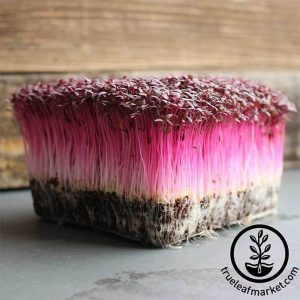
Amaranth
Amaranth was cultivated by Aztecs and other cultures from tropical climates. It is actually an ancient kind of grain used in India. Very easy to digest, Amaranth microgreens are available in different colors, from light green to pink or dark red. They are fragile shoots that enhances beautifully any meal with color and a light sweet taste. Amaranth contains high complete protein amounts with vital amino acids, in contrast with other protein sources. Amaranth is gluten-free. Amaranth microgreens also contain vitamin A, C, E, folate, iron, magnesium, phosphorus, potassium, dietary fiber, calcium, amino acids, antioxidants, minerals and essential lysine.
HEALTH BENEFITS
- • Antioxidant
- • Activates digestion
- • Helps in cancer treatment
- • Boosts the immune system
- • Helps in treatment of cardiovascular disease and hypertension
- • Decreases hair loss and greying
- • Helps metabolize fatty acids into energy
- • Protects from Osteoporosis
- • Works as an appetite suppressant
- • Improves eyesight
- • Improves recovery from illness
- https://microplantsrobert.com/en/microgreens-amaranth.html
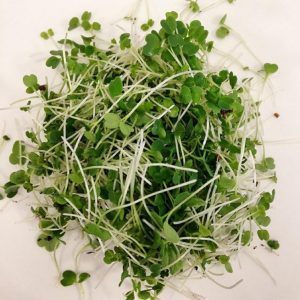
ARUGULA
Considered as one of the most useful and healthiest natural superfood, this plant adds a health supplement to a variety of menus. Arugula is also known as rocket. The Arugula microgreen is flavorful with a peppery taste. The leaf is similar to the oak leaf. It is a great source of folic acid, iron, copper and a variety of minerals and vitamins A, C and K.
HEALTH BENEFITS
- • Boost for bone and brain health
- • Detoxifying food
- • Reduce risk of cancer
- • Boosts healthy bones
- • Antioxidant
- • Improves eyesight
- • Good for healthy skin
- • Improves mineral absorption
- • Activates the immune system
- • Beneficial for weight management
- • Natural aphrodisiac
- • Lowers blood pressure
- • Protects the aging brain and cognitive decline
- • Reduces the amount of oxygen needed during exercise & enhances athletic performance
- • Helps keep body hydrated
- http://www.microplantsrobert.com/en/microgreens-aragula.html
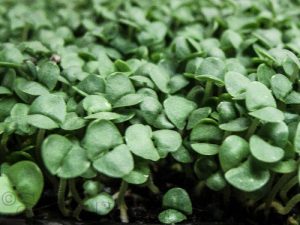
Basil
Basil is a common aromatic herb in the mint family, the same plant family as other nutrient-dense, beneficial herbs, including mint, oregano and rosemary. The taste is sweet, but savory, and just like the smell, it is peppery, yet ever so slightly minty. Basil, of course, is used to add flavor to a variety of recipes, but what may surprise you is the many benefits of basil that make it well-known for its immunity-enhancing properties and is one of the most important medical herbs known today. Basil has vitamin A, K, C and manganese.
HEALTH BENEFITS
- • Contains disease-fighting antioxidants
- • Anti-inflammatory
- • Fights cancer
- • Antibacterial Properties
- • Antimicrobial Properties that fight viruses and infections
- • Combats stress
- • Fights depression
- • Promotes cardiovascular health
- • Supports liver function and helps detoxify the body
- • Helps alkalize the body and improves digestion
- • Acts as a natural aphrodisiac
- • Protects from diabetes and metabolic syndrome
- https://draxe.com/benefits-of-basil/
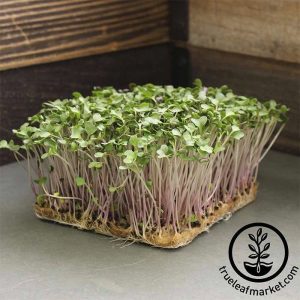
Brussels Sprouts
Brussels sprouts microgreens are a member of the Brassicaceae family of vegetables and closely related to kale, cauliflower and mustard greens. Brussels sprouts boast high levels of many nutrients and have been linked to several health benefits. They are low in calories but high in fiber, vitamins K, C, B6, and minerals such as potassium, iron, thiamine, magnesium, phosphorus. It has a delicious mild, Brussels sprout flavor and makes a great addition to any microgreens salad or garnish.
HEALTH BENEFITS
- • Helps with blood clotting and bone health
- • Rich in antioxidants to: help iron absorption; reduce oxidative stress in your cells; lower your risk of chronic disease
- • An antioxidant called kaempferol which may: reduce cancer cell growth; is Anti-inflammatory; and Improve heart health
- • Involved in tissue repair
- • Aids immune function
- • Helps support regularity and gut health
- • May help maintain healthy blood sugar levels to help control diabetes (has alpha-lipoic acid, which allows insulin to work more efficiently.)
- • Contain ALA Omega-3 Fatty Acids
- https://www.healthline.com/nutrition/benefits-of-brussels-sprouts

Beets
Beets are from the same family as chard and spinach. Beets have so many benefits that it would be a shame not to incorporate them to your daily food diet. Beets provide a well-being sensation while reducing stress. Beets micro-greens have a slight sweet flavor and bring a colorful touch with its bright red stem and the contrasting darker green leaves. Beets are low in fat, rich in fiber, iron, nitrate, folic acid, minerals, and vitamins. Beets are also charged with powerful antioxidants. Promotes muscle oxygenation while exercising, which has the potential to reduce fatigue and raise the energy level and increase tolerance to endurance training. The pectin contained in beets help remove toxins and heavy metals from the body.
HEALTH BENEFITS
- • Detoxifying and healing power
- • Anti-stress
- • Helps de-grease the body
- • Powerful antioxidant
- • Increases immune function
- • Help protects against heart disease
- • Slows aging
- • Contributes in DNA repair and protection
- • Alleviates cardiovascular disease
- • Helps protect from Alzheimer
- • Helps protect from Osteoporosis
- • Stroke prevention
- • Reduces risk of Type II diabetes
- • Reduces frequency of migraine Headaches
- • Alleviates premenstrual syndrome (PMS)
- • Prevention of epileptic seizures
- • Prevents alopecia (spot baldness)
- • Alleviates Hypertension
- http://www.microplantsrobert.com/en/microgreens-beets.html
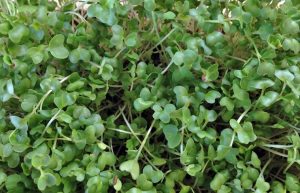
Broccoli
Broccoli is a member of the brassica family of cruciferous vegetables — the same family that includes other greens like bok choy, cabbage, kale, Swiss chard and other life-saving veggies. These nutrient-dense vegetables are excellent sources of phytochemicals, sulforaphanes and indoles — two types of strong antioxidants and stimulators of detoxifying enzymes that protect the structure of DNA. Broccoli is also full of minerals and vitamins, like vitamin B6 that helps with heart and brain health. Broccoli nutrition benefits heart health by preventing heart attacks and strokes and keeping arteries clear, in addition to correcting high cholesterol and high blood pressure. Broccoli even has benefits when it comes to your appearance. Broccoli’s high levels of vitamin A is necessary for skin health, eye health and even fertility. And a derivative of vitamin A found in broccoli, beta-carotene, is essential for liver health, immune functioning and has been shown to fight cancer.
HEALTH BENEFITS
- • Rich in Protein
- • Cancer prevention
- • Lowers blood pressure and cholesterol levels
- • Slows aging
- • Promotes teeth and gum health
- • Promotes bone health
- • Prevents prematurely aging, irritated skin
- • Promotes wound healing
- • Improves eye health
- • Detoxifies blood
- • Protects Liver
- • Balances pH level and regulates blood acidity
- • Improves hormonal health and adrenal gland functioning
- • Improves fertility
- • Increases metabolism and better management of a healthy weight
- • Promotes cognitive function, even into old age
- https://draxe.com/broccoli-nutrition/
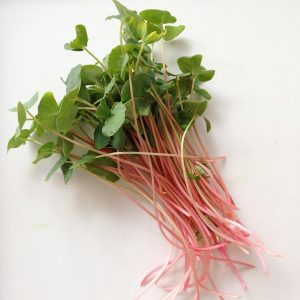
Buckwheat
Buckwheat is a nutrient-packed, gluten-free colorful microgreen. It has been consumed in Asian countries for centuries and is now becoming increasingly popular due to its many health benefits. Despite its name, Buckwheat is not related to wheat, it is a fruit seed that is related to rhubarb and sorrel. It is high in fiber, and studies have shown that it helps slow down the rate of glucose absorption after a meal, making it a healthy choice for people with diabetes. Buckwheat is also high in manganese, magnesium, copper, and zinc, which are great for the immune system. It also contains all eight essential amino acids, including lysine, which plays a key role in collagen production and is not produced by the human body.
HEALTH BENEFITS
- • Helps to reduce risk of anemia
- • Protects against asthma
- • Improves bone and teeth health
- • Best source of high-quality, easily digestible proteins
- • Reduces risk of developing gallstones
- • Helps to prevent cardiovascular diseases
- • Aids in preventing and managing diabetes
- • Preserves skin elasticity
- • Reduces risk of breast cancer & colon cancer
- • Aids in lowering levels of LDL cholesterol in blood
- http://www.microplantsrobert.com/en/microgreens-buckwheat.html
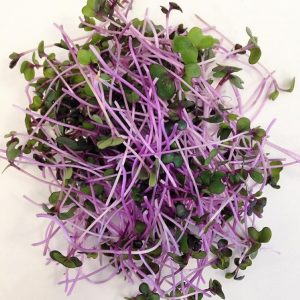
Cabbage
Cabbage is used worldwide but frequently unknown. Its health benefits are incredible. Cabbage is an abundant source of vitamin C. It is actually richer in vitamin C than oranges. It is one of the best antioxidants and it helps reduce free radicals in our body which is one of the fundamental causes of premature aging. One study performed on Chinese women, showed a significant reduction of breast cancer when cruciferous vegetables like cabbage were added to their diet. Cabbage microgreens are packed with so many beneficial minerals, such as vitamins (C, K), minerals, and other nutrients. It is rich in fiber, beta-carotene, calcium, magnesium, potassium, iodine, and sulfur. It also has a number of anti-cancer compounds which are known to stimulate enzymes activity and inhibit the growth of tumors.
HEALTH BENEFITS
- • Detoxifies blood
- • Helps remove toxins
- • Provides relief from pain
- • Promotes good eye health
- • Helps reduce risk of cancer and ulcer
- • Inhibits growth of cancer cells
- • Beneficial for weight management
- • Reduces the effects and presence of Alzheimer’s
- • Helps keep bones healthy
- • Helps prevent osteoporosis
- • Controls blood pressure
- • Good remedy for constipation
- • Improves digestion
- • Activates the healing process for wounds and damaged tissues
- • Regulates the proper functioning of nervous system
- • Has anti-inflammatory properties
- http://www.microplantsrobert.com/en/microgreens-red-cabbage.html
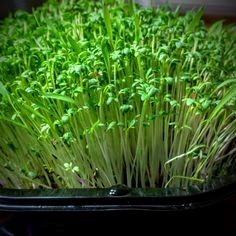
Cilantro
Cilantro is a popular herb popular around the globe that resembles flat leaf parsley at first glance, but at first sniff, transports you to the Mediterranean, Mexico, Asia, and India. Cilantro gives a fresh boost of flavor, without the addition of sea salt or other seasonings. Cilantro brings a fresh, nearly citrusy flavor to foods. Not only does this flavorful, bright herb have unlimited culinary applications, but surprisingly to many people cilantro benefits the body and has many known healing properties. Cilantro is rich in phytonutrients, flavonoids, phenolic compounds, Cilantro is very low in saturated fat and cholesterol, and the caloric value is nearly nonexistent. It is a good source of dietary fiber, vitamins A, C, E, K, calcium, iron, potassium, and magnesium. The vitamin K and calcium content of cilantro help to build strong bones, teeth, and hair. Cilantro is considered the “anti-diabetic” plant in some parts of Europe, and research shows that it helps to lower cholesterol, lower blood pressure, supports healthy cardiovascular function.
HEALTH BENEFITS
- • Rids the body of heavy metals
- • Protects against oxidative stress
- • Strong antioxidant properties
- • Protects against damage of free radicals
- • Lowers anxiety and improves sleep
- • Lowers blood sugar levels
- • Protects against cardiovascular disease
- • Prevents urinary tract infections
- • Settles digestive upset
- • Protects against food poisoning
- • Supports healthy menstrual function
- • Prevents neurological inflammation
- • Protects against colon cancer
- • Soothes skin irritations
- https://draxe.com/cilantro-benefits/
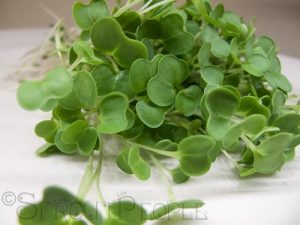
Kale
Kale is among the most nutrient dense foods on the planet. Kale is a leafy vegetable that is related to the cruciferous vegetable family. Kale has been consumed since Roman times and has been cultivated in Europe and China for years. It’s a versatile vegetable with a relatively neutral flavor that can be prepared in many different ways. Even if you’re not a huge fan of greens, you can almost certainly find a way to enjoy kale. It contains the highest levels of lutein of all vegetables contained with the USDA’s database. It also contains vitamins A, K, C, B6, and minerals Manganese, Calcium, Copper, Thiamin, Folate, Iron, Riboflavin, and Potassium.
HEALTH BENEFITS
- • Anti-inflammatory
- • Has potent antioxidants
- • Improves eye health
- • Detoxifies wastes from your body
- • Improves heart health
- • Fortifies your bones
- • Protects infant brain development
- • Lowers cancer risk
- • Manages cholesterol
- • Builds immune system
- • Lowers risk of and manages diabetes
- • Aids in weight loss
- • Improves brain health
- • Protects DNA
- • Improves appearance and health of hair and skin
- • Helps fight depression
- • Helps prevent stomach ulcers
- https://www.naturalfoodseries.com/13-health-benefits-kale/
- https://www.authoritydiet.com/why-kale-good-you-health-benefits-nutrition-facts/#tab-con-19
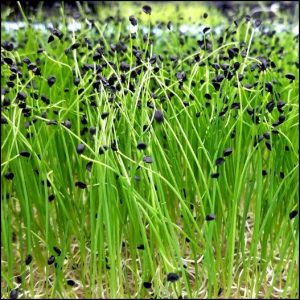
Leek
The leek is a sister plant to onion, shallots, and garlic and, like those incredible nutrient-rich foods, offers a wide host of benefits. Leeks are an excellent source of vitamin K. They are very good source of manganese, vitamin B6, copper, iron, folate, and vitamin C. Leeks are also a good source of vitamin A (in the form of carotenoids, dietary fiber, magnesium, vitamin E, calcium and omega-3 fatty acids.
HEALTH BENEFITS
- • Protects against cancer
- • Improves heart health
- • Prevents heart disease
- • Protects pregnant mothers and babies
- • Regulates cholesterol
- • Boosts metabolism and helps lose weight
- • Improves gut health
- • Fights infection
- • Improves mood and cognitive function, including concentration and memory retention
- • Helps your retinas see better in low light
- • Protects your eye tissue from oxidative damage that can cause cataracts and age-related macular degeneration
- • Keeps your bones healthy
- • Prevents anemia and treats anemic symptoms
- https://draxe.com/leeks/
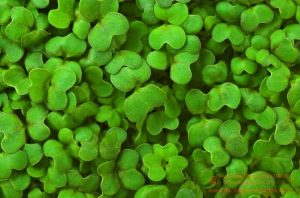
Mustard
Loaded with disease-fighting nutrition, mustard greens are full of great peppery, rich flavor, yet so light in calories, you can eat as much as you want. Mustard microgreens are lightweight champions of superfoods! The mustard greens nutrition profile is packed with fiber, vitamins A, C, K, E, B6; minerals such as folate, manganese, calcium, potassium, phosphorus, and copper; and protective phytonutrients. Mustard microgreens are one of the most nutrient-dense and beneficial foods on the planet. These leafy greens are brimming with plant–based substances that may help protect you from heart disease, diabetes and even cancer.
HEALTH BENEFITS
- • High levels of antioxidants
- • Detoxifies liver and blood
- • Helps lower cholesterol
- • Packed with phytonutrients
- • High in fiber
- • High in bone-building vitamin K
- • Good source of immune-boosting vitamin C
- • Provides skin & eye health protection
- https://draxe.com/mustard-greens-nutrition/

Nasturtium
The main substances found in nasturtium are glucosinolates, mustard oil, flavonoids, carotenoids and vitamin C. It is a good source of immunity-boosting vitamin C and may be used as a natural remedy for helping the body overcome and prevent the common cold and influenza but also for external and internal bacterial infections and to treat minor scrapes and cuts. It is also used as an herbal remedy for urinary tract infections. Nasturtium has a reputation for promoting the formation of red blood cells, and it’s been used in folk medicine as a remedy against scurvy. The herb has been used as a remedy for hair loss and to stimulate hair growth. When applied externally, it also works against various fungal infections, including yeast infection. Additionally, it was used traditionally to treat muscular pain. It is one of the more powerful antibacterial plants available.
HEALTH BENEFITS
- • Helps with respiratory system diseases: asthma, bronchitis, excessive mucus, inflammatory diseases, cough, cold, flu, emphysema
- • Helps with kidney diseases, urinary tract diseases, such as inflammatory conditions and infections, urinary incontinence
- • Helps eliminate diseases of hair and scalp
- • Promotes healing of skin disorders, skin injuries, skin impurities, burns, and rashes
- • Helps eliminate diseases of the liver and bile
- • Helps eliminate inflammation and diseases of the eye
- • Regulates menstruation
- • Helps eliminate diabetes
- • Boosts sex drive in men
- • Boosts physical and mental energy
- • Helps in treating cancer
- https://caloriebee.com/nutrition/The-Various-Health-Benefits-and-Uses-of-Nasturtiums
- https://www.herbal-supplement-resource.com/nasturtium.html
- http://healthtipsnow.com/nasturtiums/
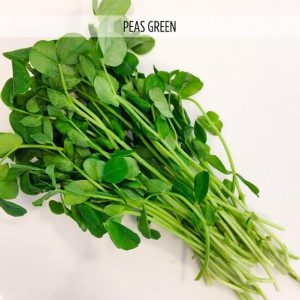
Pea, Green and Snow
Peas are a powerhouse of nutrition and strong anti-oxidants. Peas have such high-quality protein that they are now added to many meals and commercial protein products. In taste, pea tendril microgreens are slightly sweet, with a mild bitter aftertaste, and they have a nutty undertone. The leaves have a texture similar to spinach, although not as delicate. Pea tendrils add freshness and a little crunch to dishes with rich and earthy flavors. Peas microgreens are low fat but high everything else. They contain protein, fiber, omega-3 and micronutrients. Rich in folate, carbohydrates, vitamin A, C, E, B1, B2, B3, B6.
HEALTH BENEFITS
- • Antioxidant
- • Helps prevent stomach cancer
- • Slows aging
- • Prevents wrinkles
- • Enhance the immune system
- • Helps protect from Alzheimer
- • Protects from Osteoporosis
- • Contributes to regulate blood sugar level
- • Prevents arthritis
- • Reduces bad cholesterol
- • Beneficial for weight management
- • Helps keep bones healthy
- • Relieves constipation
- • Has anti-inflammatory properties
- http://www.microplantsrobert.com/en/microgreens-peas.html
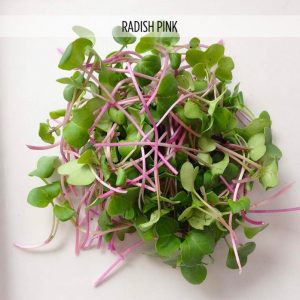
Radish
Radish is well known all around the world. The radish microgreens are very nutritious and popular. Many varieties of radish are available with different colors from ranges of red-pink-purple to yellow and green. The radish microgreen is crispy, and its taste is sweet and pleasantly peppery also. The radish microgreen is a good source of vitamin C, energy and carbohydrates. It also contains zinc, potassium, folate, manganese, copper, sodium, phosphorus, dietary fiber, niacin, riboflavin, vitamin B1 & B6, calcium, iron, magnesium and so much more.
HEALTH BENEFITS
- • Natural diuretic
- • Anti-fungal and anti-bacterial
- • Detoxifying food
- • Has anti-inflammatory properties
- • Helps prevent lungs cancer
- • Recommended in jaundice treatment
- • Contributes to purifying the blood
- • Beneficial for weight management
- • Proven to be beneficial in urinary disorders
- • Helps with constipation
- • Helps cleanse the body
- • Soothes the digestive system
- • Relieves congestion, good for allergies, infections or colds
- http://www.microplantsrobert.com/en/microgreens-radish.html

Sorrel
Sorrel is a bushy, annual plant from the family of Buckwheat. Sorrel is usually grown to add flavor to food because of its lemony, sharp taste, but it has various advantages such as maintaining blood pressure, improving eyesight, heart health, etc. Sorrel has high amounts of fiber and its rich in Vitamin C and also contains some Vitamin A, Vitamin B-6, Iron, Magnesium, Potassium, and Calcium. It is considered to be an excellent anti-oxidant and anti-microbial.
HEALTH BENEFITS
- • Reduces blood pressure
- • Antidote against scorpion poison
- • Anti-microbial and anti-inflammatory
- • Improves digestion
- • Prevents scurvy
- • Antibacterial and heals wounds
- • Cancer prevention
- • Maintains good eyesight and prevention of night blindness
- • Induces milk flow of breastfeeding moms
- • Prevents and soothes skin problems
- • Maintains kidney health and prevents kidney stones
- • Promotes heart health
- • Helps maintain good levels of cholesterol
- • Anti-diabetic properties
- • Prevents gastroenteritis
- • Provides energy and oxygenates blood through abundance of iron
- • Strengthens bones and provides bone marrow protection
- • Encourages hair growth and density
- • Cures jaundice and other liver related diseases
- • Reduces obesity
- • Detoxifies the body
- • Treats shingles
- https://www.homeremedynation.com/21-proven-health-benefits-sorrel/

Sunflower
Sunflower microgreens offer one of the most balanced forms of a complete plant protein around. It is one of the best food to add to your diet for overall health and wellbeing. It has a strong stem and green leaves. The taste is fresh and crunchy. Delicious eaten as a snack or in any salad, sandwich, wrap or culinary creation. Sunflower microgreens are low in calories and high in nutrition, making them ideal for any natural and healthy fat loss program. They are a great source of valuable nutrients including proteins, enzymes, folic acid, selenium, lecithin, minerals, including calcium, copper, iron, magnesium, potassium, phosphorous, zinc as well as vitamins A, C, Complex D and E.
HEALTH BENEFITS
- • Contains lecithin which helps break down fatty acids
- • Activates cells in the immune system
- • Helps build skeletal, muscular, and neurological systems
- • Boosts your fertility
- • Aids in stress relief
- • Helps eliminate accumulated cholesterol in arterial walls
- • Improves regeneration of blood supply
- • Revitalizes tissues
- • Calms inflammation
- • Activates deodorizing the body
- • Natural expectorant
- • Antioxidant
- • Helps prevent heart disease
- http://www.microplantsrobert.com/en/microgreens-sunflower.html
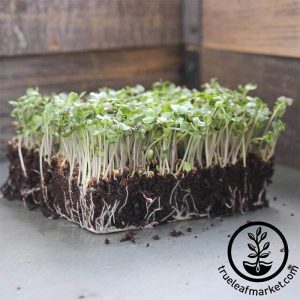
Collards
Collards are in the brassica family with kale, cabbage, and broccoli. But, research has proven that steamed collard greens have equal–if not better–cholesterol-lowering properties than their leafy relatives. Referred to as the dinosaur of vegetables, collards are indigenous to the Americas. It is ranked as one of the most nutritious foods of the world, much like kale they are also considered a super food. Collards are bitter, pungent, earthy and salty. They’re extremely low in calories (35 calories in half a cup) and are rich in folate, calcium, dietary fiber, and vitamins E, A, K, B6, and C. One cup has 5 grams of protein and dietary fiber. Collards contain folate, Riboflavin, thiamine, niacin.
HEALTH BENEFITS
- • Anemia prevention; great for pregnant women
- • Anti-aging; reduces wrinkles and sunspots
- • Bone strength; reduces fractures; fights osteoarthritis & rheumatoid arthritis
- • Calming; revitalizes sore muscles and improves mood
- • Cancer prevention
- • Helps prevent diabetes
- • Reduces bad cholesterol
- • Prevents heart disease
- • Helps digestion; IBS; helps prevent leaky gut syndrome
- • Enhances hair growth and strengthens hair
- • Immunity builder
- • Excellent detoxifiers; liver cleansers
- • Anti-inflammatory
- • Antioxidant
- • Helps with sleeping difficulties
- • Improves memory
- • Helps prevent depression
- https://www.washingtonian.com/2012/04/25/collard-greens-the-southern-comfort-food-thats-actually-healthy/
- https://www.naturalfoodseries.com/11-health-benefits-collard-greens/
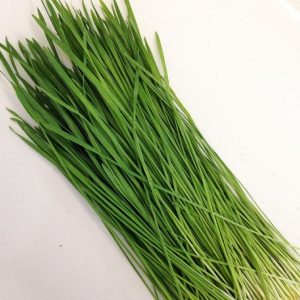
Wheatgrass
Wheatgrass may appear like a simple grass, but it is actually among the most powerful natural detoxifying agents, since it is one of Nature’s richest sources of chlorophyll and live enzymes. In fact, it has been said that one ounce of wheatgrass is equivalent in nutritional value to more than 2 pounds of leafy green vegetables. From diminishing the appetite, to reducing body odors and preventing cancer, wheatgrass has a place in your diet. Wheatgrass contains more than 90 minerals, including potassium, calcium, magnesium and sodium as well as essential enzymes and 19 amino acids.
HEALTH BENEFITS
- • Diminishes appetite. Taking a wheatgrass shot every morning on an empty stomach prevents overeating
- • Stimulates circulation: apply wheatgrass juice on skin to dilate blood vessel and activate circulation
- • Improves digestion
- • Alleviates arthritis. Its chlorophyll fights the inflammation
- • Reduces fatigue
- • Helps get rid of bad breath and body odors
- • Treats skin wounds
- • Prevents tooth decay
- • Cleanses the liver
- • Treats sunburns
- • Stabilizes blood sugar level
- • Clears sinus congestion
- • Helps in regenerating skin cells
- • Helps in acne treatment
- • Prevents cancer
- • Boosts immunity
- • Natural expectorant
- • Antioxidant
- • Helps prevent heart disease
- http://www.microplantsrobert.com/en/microgreens-wheat-grass.html
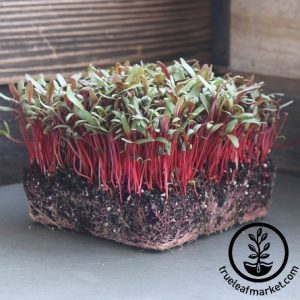
Swiss Chard
Swiss chard is one of the most impressive vegetables out there, as it has an extremely high nutrient-density. Swiss chard nutrition benefits include its many forms of polyphenol, betalain and carotenoid antioxidants which are powerful at fighting free radical damage, inflammation, and disease development. These antioxidants are crucial for eye health, and act as antihistamines, reduce allergic reactions and inflammatory responses. Swiss chard is also one of the best sources of antioxidants, anti-inflammatory, and anti-cancer properties. On top on this, Swiss chard packs an impressive amount of potassium, magnesium, calcium, copper, and even more vitamins and minerals. And with high levels of vitamin K, vitamin A, vitamin C, and many trace minerals, there’s almost no health condition that Swiss Chard can’t help. Swiss chard nutrition is especially well known for having special chemical properties that make it extremely useful for preventing and treating diabetes. .
HEALTH BENEFITS
- • High in antioxidants
- • Slows the aging process
- • Helps prevent and fights cancer
- • Protects heart health (cardiovascular)
- • Prevents high blood pressure
- • Helps prevent diabetes
- • Maintains bone health
- • Improves digestion
- • Prevents constipation and diarrhea
- • Helps maintain healthy brain function
- • Protects eye health
- • Benefits nerve and muscle function
- https://draxe.com/swiss-chard-nutrition/

Borage
Also known as Starflower, bee plant or beebread. Borage is a healthy plant with blue flowers. Native to Mediterranean region, today it is extensively cultivated all over North America and Europe. It taste is much like cucumber, and leaves which are steeped in water are consumed as a refreshing drink. In Roman and Greek times, it was thought to eliminate melancholy. The Greeks place it in wine cups to enhance courage. Eighty-nine grams of serving of raw Borage contains 19 calories and 0.62 grams of fat. This microgreen is high in calcium, iron, magnesium, thiamin, riboflavin, niacin and others. It provides vitamin C, A, manganese, and copper. It enhances the immune system and soothes inflammation. It also possesses anti-inflammatory, diuretic, galactogogue (increases the flow of a mother’s milk.) and emollient properties
HEALTH BENEFITS
- • Respiratory health: sore throat, cold, painful sinuses, and stuffy nose.
- • Enhances immune system
- • Skin conditions: stings, bug bites, psoriasis and eczema.
- • Anti-inflammatory
- • Omega 6: helps to reduce rheumatoid arthritis; regeneration of joints
- • Enhances vision w/reduction of oxidative stress in eyes; prevent the macular degeneration.
- • Helps prevent breast & prostate cancer.
- • Reduce anxiety, and promotes peace of mind, relaxation and sound sleep.
- • Kidney ailments: diuretic, lowers the excess fat, salt and water
- • Reduce fever: Flu and colds, enhances sweat, clear toxin from the body and also speeds up the recovery process.
- • Relieves bowel syndrome: soothe upset stomachs and provide relief from the bowel syndromes by soothing inflammation and regulating digestion.
- https://www.healthbenefitstimes.com/borage/
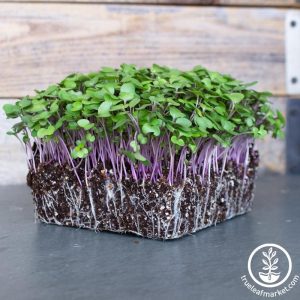
Kohlrabi
The health benefits of kohlrabi include its ability to improve your digestive processes, help you lose weight, may reduce the risk of cancer, boost the immune system, regulate the metabolism, increase circulation, strengthen bones, improve vision health, and assists in protecting muscle and nerve function. Kohlrabi tastes somewhat like a broccoli stem, although more palatable. Kohlrabi consists of calcium, potassium, magnesium, iron, and calcium, as well as vitamins, such as vitamin C, B-complex vitamins, vitamin A, and vitamin K. Along with that, it is also high in dietary fiber and antioxidant compounds such as phytochemicals and various carotenes.
HEALTH BENEFITS
- • Improves Digestion; eliminates constipation, cramping, bloating
- • Weight Loss
- • Boosts Energy Level
- • Regulates Blood Pressure
- • Prevents heart attacks and strokes
- • Prevents Anemia
- • Improves Bone Strength
- • Eye Care; cataracts, macular degeneration
- • Prevents cancers; prostate & colon
- • helps control heart rate and blood pressure
- • It helps the human body maintain healthy connective tissue, teeth, and gum.
- • Antioxidant
- https://www.organicfacts.net/health-benefits/vegetable/health-benefits-of-kohlrabi.html